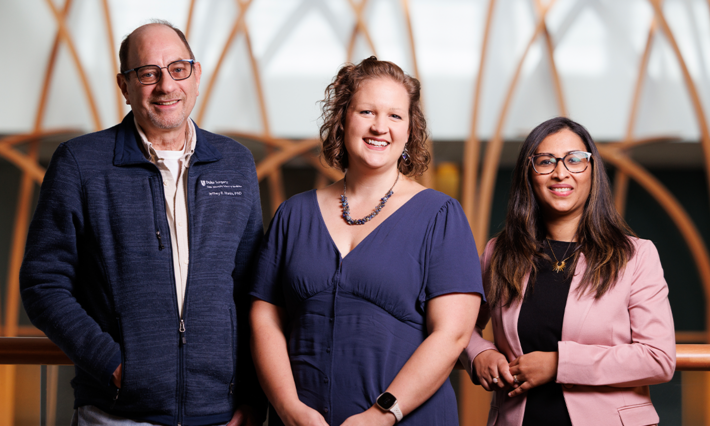Current guidelines from the National Comprehensive Cancer Network (NCCN) recommend high-risk surveillance for patients with BRCA1 or BRCA2 mutations up to the age of 75. However, there is a lack of clear guidance for patients beyond this age, leading to uncertainty among clinicians regarding the best course of action for older patients who have not developed breast cancer.
New research from a team of experts at Duke has found these high-risk screenings for breast cancer may not be necessary in older patients with BRCA1 and BRCA2 pathogenic or likely pathogenic (P/LP) mutations. The team was led by Astrid Botty van den bruele, MD, surgical oncologist with the Duke Cancer Institute (DCI), and Jennifer Plichta, MD, surgical oncologist with the DCI’s Breast Oncology Program.
The project addressed the gap in surveillance screening by analyzing data from Duke's own surgical database. The study included 316 patients with P/LP BRCA1 or BRCA2 mutations, categorized into three cohorts based on age at the time of genetic testing: younger (ages 30-59), middle-aged (ages 60-69), and older (ages 70 and older).
The study confirmed that younger patients with BRCA1 and BRCA2 mutations are more likely to develop breast cancer; approximately 57 percent of all patients assessed in the study had developed breast cancer, with the highest incidence in the younger age group. Additionally, breast cancer was primarily detected in patients 70 and older through mammograms or clinical breast exams rather than MRI.
These findings indicate that the types of breast cancers developed after the age of 70 are likely to be found on routine breast imaging (such as a mammogram) and extra imaging with tests such as an MRI are unlikely to be helpful. All the cancers diagnosed in this age group were also found at an earlier stage, another indicator that more intense screening and imaging is probably unnecessary in this age group.
The study supports the consideration of de-escalating high-risk surveillance for older patients with P/LP BRCA1 or BRCA2 mutations. The findings highlight the importance of personalized care and the potential to reduce unnecessary stress and procedures for older patients.
"Clinicians can consider de-escalation of high-risk surveillance in this older, genetically susceptible age group,” Botty van den bruele said. “But you certainly need to consider each patient on a case-by-case basis, taking into account family history, comorbidities, and other risk factors."
The team hopes to conduct a multi-institutional review to validate the findings across different cancer centers. The ultimate goal is to influence NCCN guidelines and provide evidence-based recommendations for clinicians managing older patients with P/LP BRCA1 or BRCA2 mutations.
"Our population is getting older, thankfully, because our therapies and modalities have become so good,” Botty van den bruele said. “We want to be able to treat all patients appropriately with high quality data navigating our conversations."




